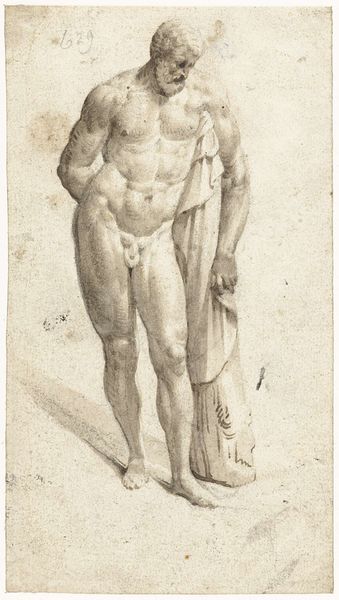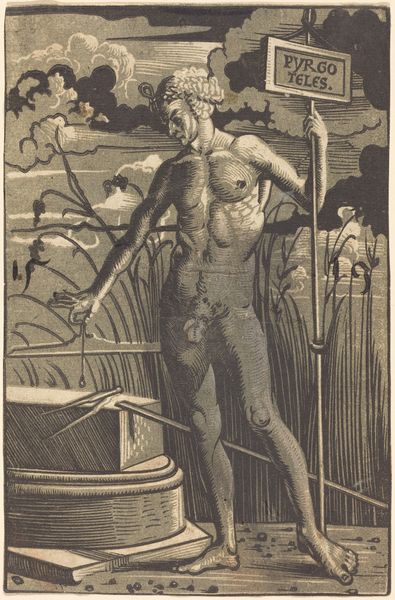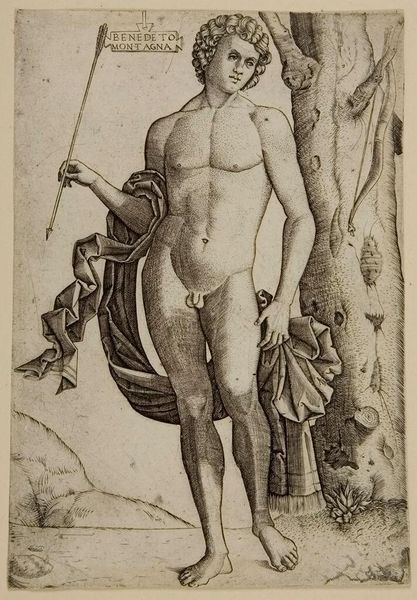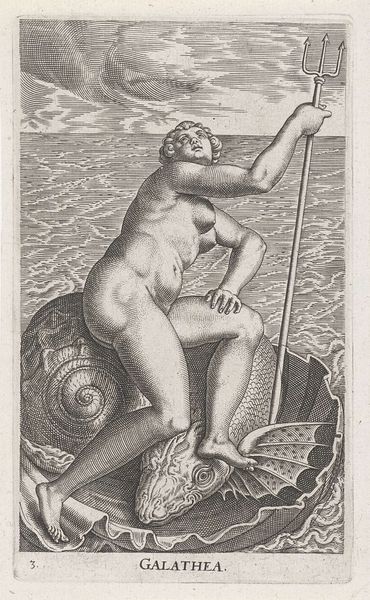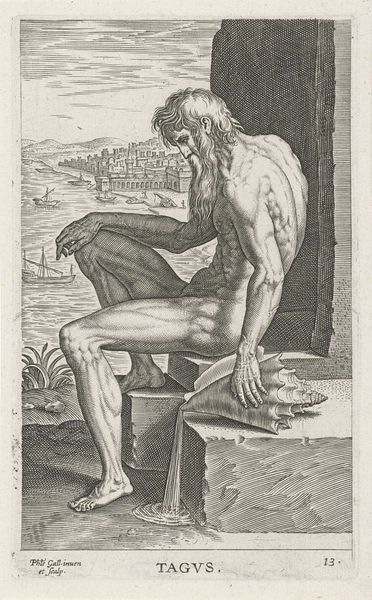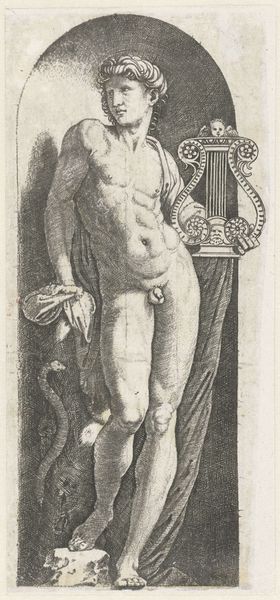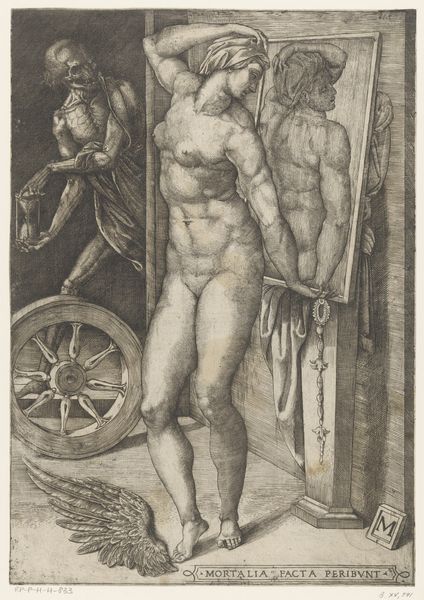
painting, oil-paint, wood
#
painting
#
oil-paint
#
figuration
#
oil painting
#
wood
#
history-painting
#
italian-renaissance
#
nude
Dimensions: 78 cm (height) x 40.5 cm (width) (Netto)
Editor: Here we have Saint Sebastian, an oil painting on wood dating back to the late 15th century, early Renaissance period. What strikes me is the contrast between the beautiful landscape in the background and the obvious pain in the figure’s ordeal. What is your interpretation of this piece? Curator: This painting of Saint Sebastian invites us to consider the historical contexts that informed its creation and reception. What stories are not immediately obvious? The legend of Sebastian intersects with themes of faith, persecution, and the body as a site of both suffering and resistance. It's interesting how this imagery has been continuously reinterpreted, often reflecting contemporary anxieties and desires. How might ideas about power, gender and sexuality play into this representation? Editor: So it's not just about religious suffering, but potentially something more about societal power? I hadn’t considered that. Curator: Precisely! Renaissance artists were fascinated by classical forms, often idealizing the male nude. But by putting Sebastian's body on display while telling his story, it invites discussion about desire, vulnerability, and the very visible costs of defying authority. What happens when we view this from the margins, considering, perhaps, a queer reading of martyrdom? Editor: That’s fascinating! I see what you mean about different readings. I suppose the historical context really does shift our understanding. Curator: Exactly. And that opens the way to questioning: Whose perspectives have historically dominated interpretations of this work, and whose have been silenced? Art is not neutral; it's a cultural product embedded with ideology. Editor: Wow, that's a lot to think about. I’m going to see if I can dig up more on how queer readings influenced this image. Thanks! Curator: It’s been a pleasure! Let’s continue to consider art’s broader implications.
Comments
No comments
Be the first to comment and join the conversation on the ultimate creative platform.

